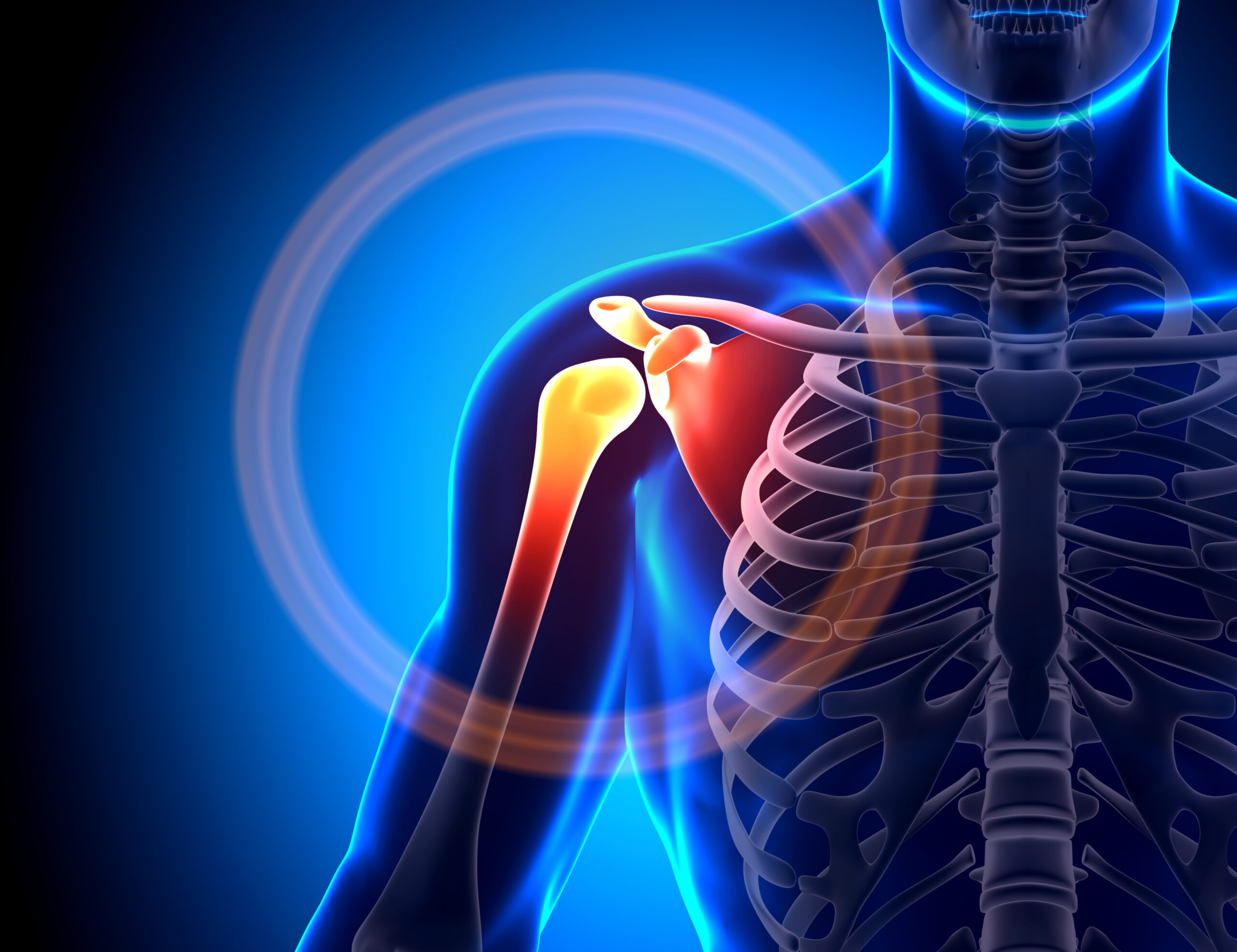The shoulder is one of the most complex joints in the body. It is made up of three bones, the clavicle (collar bone), scapula (shoulder blade), and the humerus (long bone of the upper arm), and is connected with many muscles, tendons, and ligaments. The shoulder is the most mobile joint in the body and has the widest range of motion which makes it vulnerable to overuse injuries.
Sprain
When you stretch or tear a ligament in your shoulder, this is what we would call a sprain. A ligament is a connective tissue that connects bones to each other. Sprains can happen at any time to anyone. Oftentimes sprains are common and will heal on their own. However, in severe cases where the ligament is severed, surgery may be required.
Strain
A shoulder strain occurs from the stretching or tearing of muscles or tendons in the shoulder. This can happen when the shoulder remains in one position for long periods of time. Some sports require repetitive overhead movement like tennis and swimming. These sports can increase a person’s susceptibility to a shoulder strain.
Tear
A shoulder tear is an injury to the soft tissue that gives the joint range of motion and stability. This injury can occur in the tendons, muscles, or the labrum. Over time if left untreated, smaller tears can become bigger and more severe. Oftentimes they are caused by overuse or sudden injury. Athletes who perform in sports such as baseball, weightlifting, and tennis are at an increased risk of shoulder tears.
Dislocation
A dislocated shoulder is an injury in which the humerus pops out of the cup shaped socket called the glenoid that is located in your shoulder blade. The shoulder is the most mobile joint in the body which makes shoulder dislocation very common. Due to its ability to pivot in several directions, the shoulder can dislocate in various ways. Most commonly the shoulder dislocates from the front. It takes very strong force to pull the bones out of place, normally caused by a sudden blow.
A dislocated shoulder can happen due to:
- Sudden Trauma: Such as a hard blow due to a motor vehicle accident.
- Falling: During a fall, our arms usually outstretch to lessen the blow from falling. But sometimes this sudden force can dislocate a shoulder.
- Sports Injury: Very common in sports, shoulder dislocation is most common in football, volleyball, and gymnastics.
To prevent a dislocated shoulder try to avoid falls, wear protective sports gear, and exercise regularly and correctly to maintain strength and flexibility. Shoulder dislocations can become a recurrent injury.
If you suspect a shoulder dislocation injury, get medical help right away. In the time that you are waiting, make sure to keep the shoulder stationary and apply cold to the area to prevent swelling. Don’t try to force it back into place as this can cause further damage.
Symptoms of a dislocated shoulder include intense pain, swelling, and a visibly out of place shoulder.
Cartilage Tear
Cartilage tears are common joint injuries that occur especially in athletes and older people.
A cartilage tear injury is usually followed by stiffness in a joint preventing bending. Torn cartilage can cause long term issues if not treated right away.
There are a lot of factors that go into the treatment of torn cartilage. It greatly depends on the severity and location of the injury, the joints overall health as well as the age and activity level of the person. Minor tears can be treated with noninvasive means such as rest, ice and compression. More severe injuries might require surgery as cartilage cannot heal itself very well. Regardless, seeking medical attention as soon as possible is the best course of action.
Bursitis
An inflammation of bursa which are sac-like structures located where friction in the body may occur, like in between bones and tendons. When they become irritated and inflamed, this leads to bursitis.
An injury, infection, or underlying condition can cause inflammation of bursa. Bursitis is diagnosed by identifying swelling, tenderness, and pain in the affected area. Treatment depends on the type and severity of the condition and is directed towards reducing inflammation and infection.
Symptoms of bursitis will generally begin with swelling but vary depending on the type and severity. Additional symptoms may include tenderness, pain, fever, and local site redness and warmth.
Frozen Shoulder
Also known as adhesive capsulitis, is a condition that causes stiffness and pain in the shoulder joint. Signs and symptoms generally begin gradually and worsen over time. Whether treated or not, this condition is usually resolved in one to three years.
The risk of suffering from a frozen shoulder greatly increases if you are recovering from a medical condition or procedure that prevents movement of your arm, such as rotator cuff surgery or a stroke. Treatment involves motion exercises and steroid injections to numb the pain.
What is the best course of action?
For many issues revolving shoulder injuries, the best thing to do is have it assessed by a medical professional. If you are experiencing any type of shoulder pain or discomfort, please call or go online to make an appointment with one of the orthopaedic surgeons here at Nebraska Orthopaedic Center.
Disclaimer
No content in this article should ever be used as a substitute for medical advice from a medical professional. If you are experiencing any pain or discomfort in your shoulder, you should seek professional medical advice.

